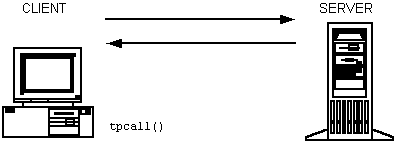


|

|
|
|
|
What Is Request/Reply Communication?
To implement request/reply communication, the BEA Tuxedo system uses IPC message queues. Queues are the key to connectionless communication. Each server is assigned an Inter-Process Communication (IPC) message queue called a request queue and each client is assigned a reply queue. Therefore, rather than establishing and maintaining a connection with a server, a client application can send requests to the server by putting those requests on the server's queue, and then check and retrieve messages from the server by pulling messages from its own reply queue.
The request/reply model is used for both synchronous and asynchronous service requests as described in the following topics.
What Is Synchronous Messaging?
In a synchronous call, a client sends a request to a server, which performs the requested action while the client waits. The server then sends the reply to the client, which receives the reply.
Synchronous Request/Reply Communication
What Is Asynchronous Messaging? In an asynchronous call, the BEA Tuxedo client does not wait for a service request it has submitted to finish before undertaking other tasks. Instead, after issuing a request, the client performs additional tasks (which may include issuing more requests). When a reply to the first request is available, the client retrieves it. Asynchronous Request/Reply Communication

|

|

|
|
|
|
Copyright © 2001 BEA Systems, Inc. All rights reserved.
|